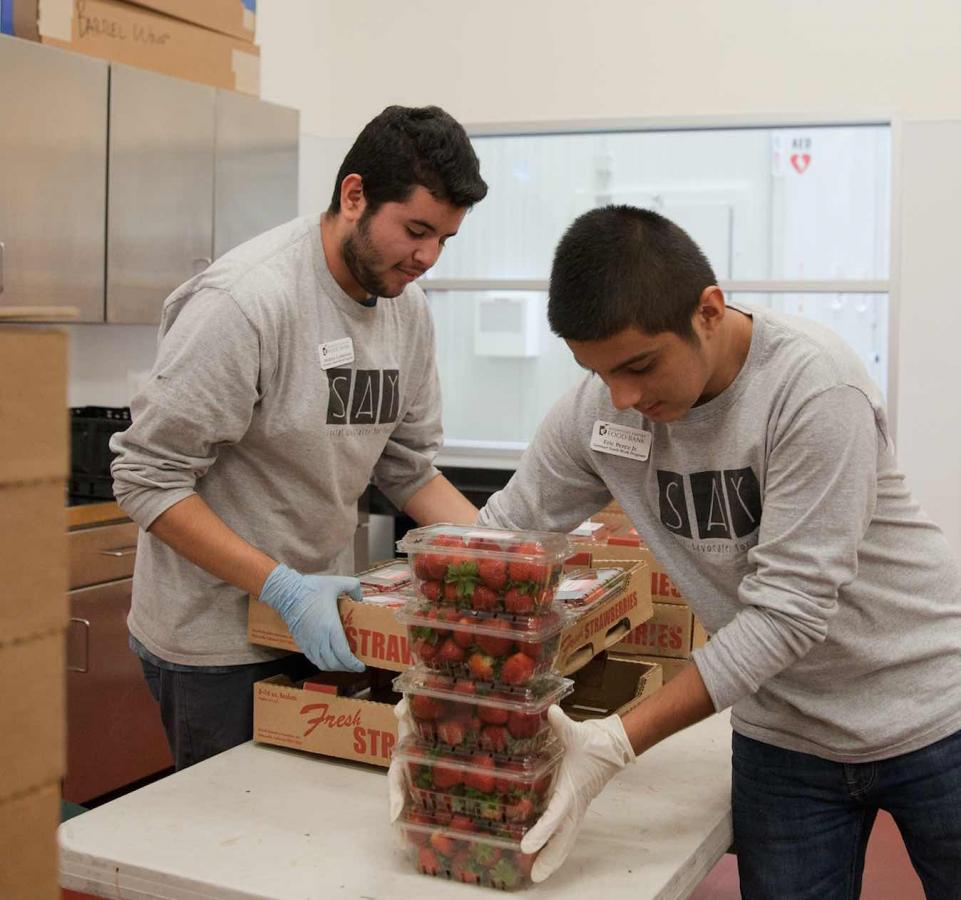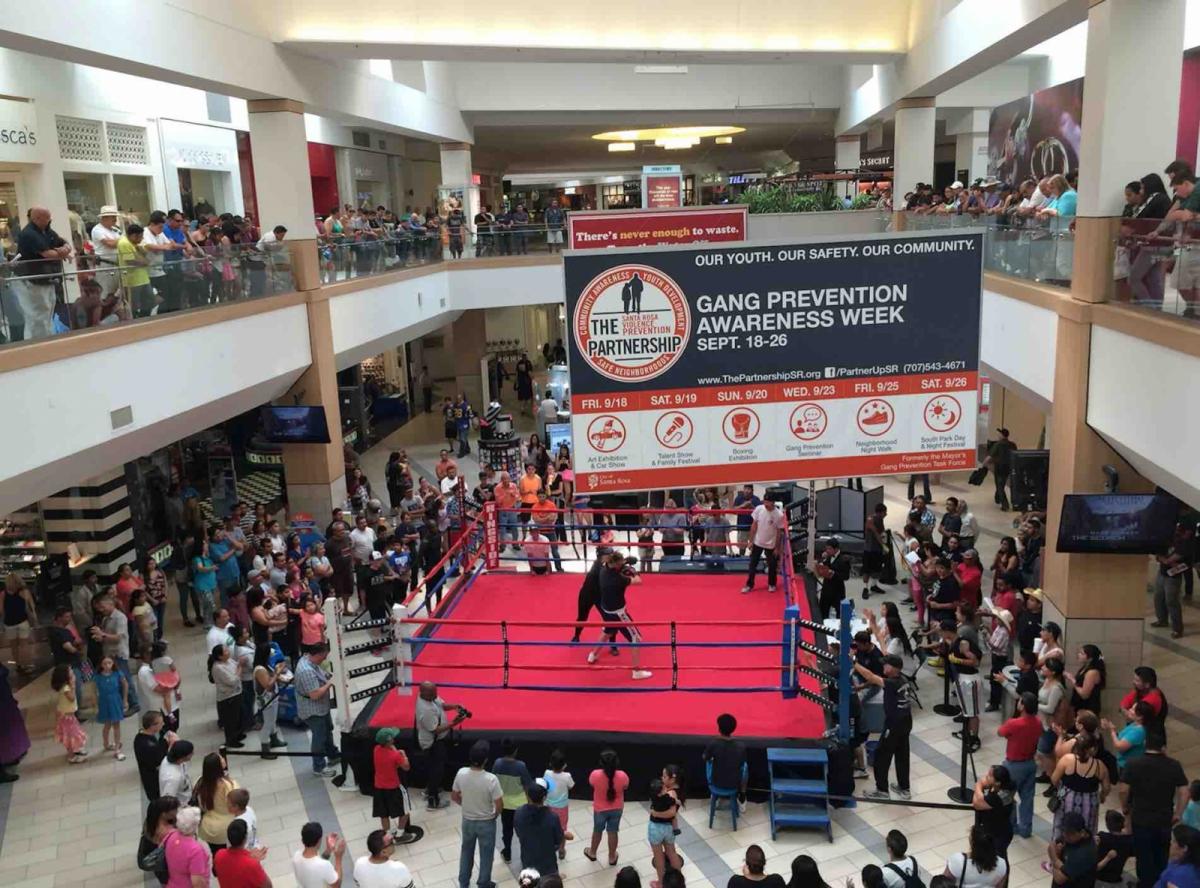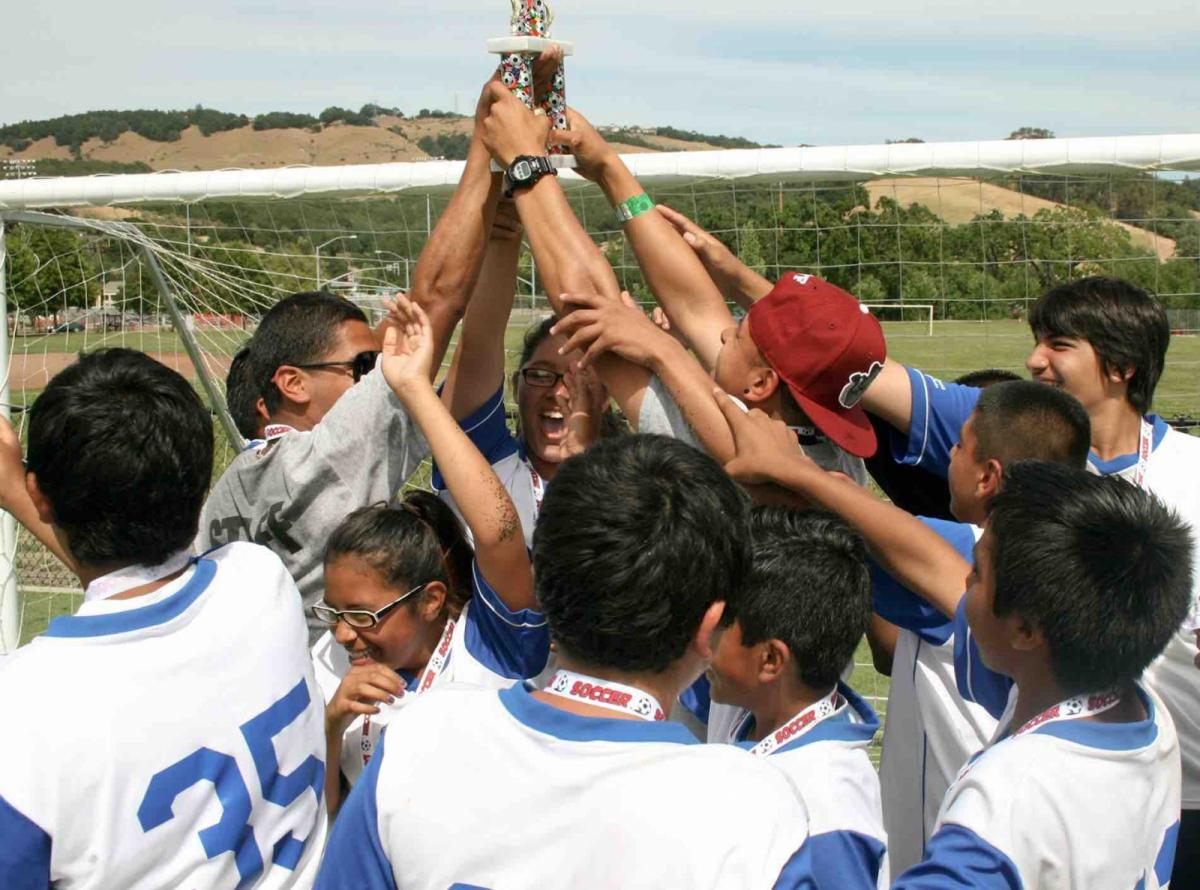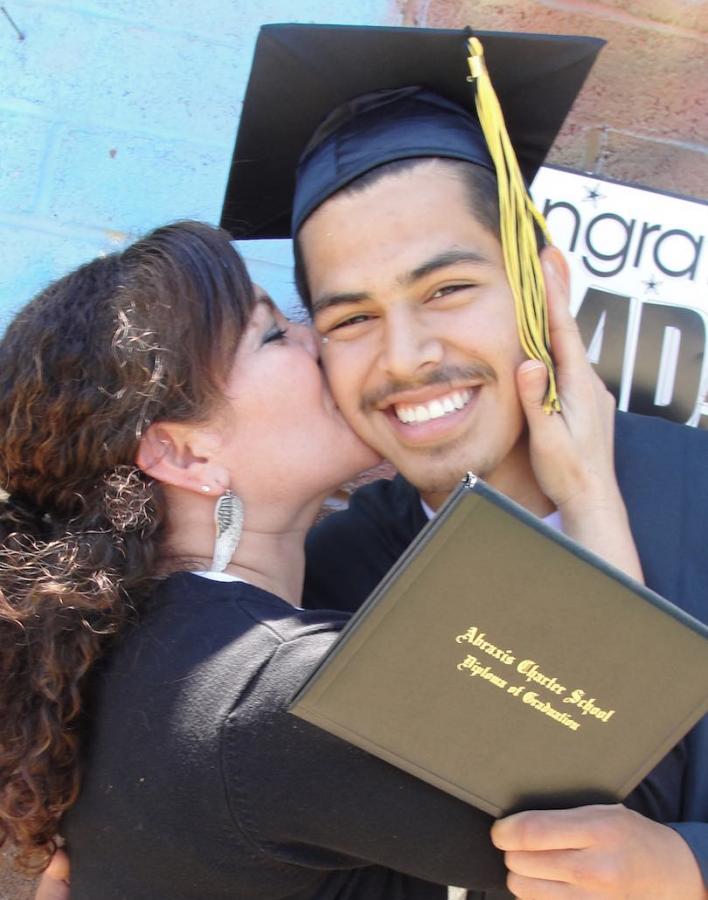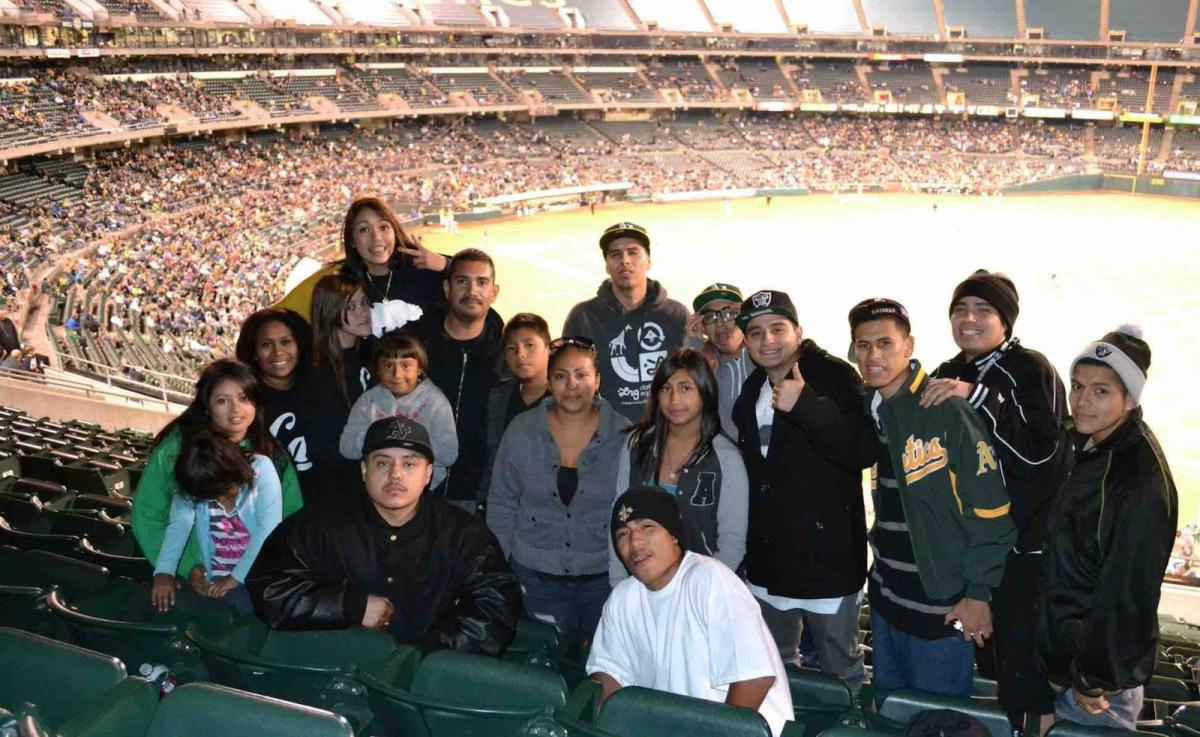Santa Rosa’s Violence Prevention Efforts Lead to Success
Randi Kay Stephens is program coordinator for the Institute for Local Government’s Local Government Basics program and CCS (Cities Counties Schools) Partnership; she can be reached at rstephens@ca-ilg.org.
Faced with an alarming increase in crime and violence in the early 2000s, the City of Santa Rosa developed a partnership with multiple agencies and community-based organizations to address the unexpected challenge. The violence peaked in 2002 when a Cinco de Mayo gathering erupted in gunfire and chaos. Fourteen years later, violent crime in Santa Rosa has decreased by over 40 percent due in large part to a unique collaborative effort supported by more than 50 diverse agencies and organizations.
Organizing for Violence Prevention
Following the Cinco de Mayo riot, Santa Rosa’s mayors — first Sharon Wright and then Jane Bender — convened a task force to examine internal needs and research models that could be implemented in Santa Rosa to decrease gang violence and provide more opportunities for youth. The community was invited to participate in creating a comprehensive plan and approach. The Mayor’s Gang Prevention Task Force included residents, representatives from public safety agencies, prevention and intervention advocates, and business and school leaders.
The task force borrowed heavily from the model used by the City of San José, which “leverages a variety of available ‘pro-social’ community resources to combat the antisocial influences that youth receive from gangs.”
In response to the changing needs of the community and the need to address all youth violence, in 2014 the Mayor’s Gang Prevention Task Force became the Santa Rosa Violence Prevention (SRVP) Partnership.
“The entire community owns the solution and supports the effort. This is not just a program, this is full participation,” says former Santa Rosa City Manager Kathy Millison. “The SRVP Partnership is one of the best community-based problem-solving efforts I’ve seen in my 37-year career.”
The SRVP Partnership comprises two teams: a policy team and an operational team. The policy team provides leadership and direction by setting policies and monitoring the effort’s effectiveness. Leadership for the team’s planning, implementation and facilitation is provided by a city council member appointed by the mayor, along with the chief of police and a program manager from the Office of Community Engagement, which is part of the City Manager’s Office. Select members of the policy team also serve on a steering committee that provides further direction and guidance.
The operational team, which includes additional members of the community and the organizations represented on the policy team, is responsible for providing direct services. The SRVP Partnership staff and the gang unit sergeant of the Santa Rosa Police Department lead this group.
The partnership meets bimonthly to discuss trends, identify opportunities for collaboration and align finite local resources to maximize benefits to the greater community.
“The key to the operational team’s success was making sure that enough of the stakeholders included had the resources and knowledge to accomplish goals, without it being so large that it got bogged down,” says Santa Rosa Vice Mayor Tom Schwedhelm, who chairs the SRVP Partnership policy team.
Funding the Effort
Due to the early interest and community support for the task force, local leaders quickly realized that additional dedicated support for intervention and prevention programs was essential. In 2004 more than two-thirds of Santa Rosa’s voters approved Measure O, a quarter-cent transactions and use tax, for a period of 20 years. Revenues generated from the measure are used specifically for services related to police (40 percent), fire protection (40 percent) and gang prevention and intervention (20 percent).
“The collaborative had already done a lot of the key work needed to educate the public on the measure before it reached the ballot, by pulling together all the different stakeholders in the community and getting them involved in how the money would be spent,” says Schwedhelm.
Measure O has four objectives for gang prevention and intervention:
- Enhancing and improving gang prevention and intervention curriculum and programs in schools;
- Adding new programs that emphasize positive role models, problem-solving and community safety in neighborhoods affected by high levels of gang activity;
- Providing additional after-school and summer programs that stress academic and social success, recreational activities, sports, athletic programs and safe neighborhoods without fear of gangs, drugs or violence; and
- Offering grants to organizations for youth and parenting programs that focus on gang and anti-violence education, prevention and intervention, community safety and a comprehensive array of social services in high-need neighborhoods.
Per the ordinance, the city established an oversight committee to review expenditures and changes to implementation plans and approve an annual report on all expenditures and revenues. The committee comprises Santa Rosa residents who are appointed by the city council. The oversight committee not only fulfills a statutory requirement but also serves to assure the public that the money is not being misused.
Measure O provides long-term resources to successfully implement the SRVP Partnership’s vision. Between 2006 and 2015 Measure O provided more than $4 million in grant funding to organizations that provide services for 27,500 youths and their parents in Santa Rosa. The partnership succeeded in leveraging Measure O funding by securing three grants totaling over $2.3 million from the Board of State and Community Corrections’ California Gang Reduction, Intervention and Prevention Program.
“The SRVP Partnership has received national recognition for its successful and innovative collaborative approach,” says Santa Rosa Police Chief Hank Schreeder. “We are very proud of our program and what it has been able to accomplish to effectively address youth violence. However, we must remain attentive — violence prevention requires constant vigilance.”
The Partnership Achieves Results
Since the implementation of Measure O in 2004–05, the SRVP Partnership has monitored violent crime, graduation and dropout rates to determine if the community is making progress in supporting Santa Rosa youth and families.
Between 2005 and 2014, according to the California Department of Justice, Santa Rosa experienced a:
- 44 percent reduction in its violent crime rate;
- 42 percent reduction in its juvenile misdemeanor arrest rate;
- 40 percent reduction in its juvenile felony arrest rate; and
- 13 percent reduction in its juvenile felony violent offense arrest rate.
In addition, high-school graduation rates have increased by 10 percent since 2010. This level of success can be attributed to the cooperative effort between government agencies and nonprofit organizations working closely and collaboratively to support positive outcomes.
As a result of Measure O grant funding for fiscal year 2014–15:
- 38 youths who had dropped out re-enrolled in school, which generated $230,438 in annual revenue for Santa Rosa schools;
- 37 youths received job training and 22 youths obtained jobs; and
- 80 youths with prior arrests were not rearrested during 2014–15, which represents a total cost savings of $497,016 for each month not spent in custody.
The Future of the Collaborative
Though the partnership’s vision for supporting Santa Rosa’s youth remains unchanged, the collaborative now seeks to address youth and gang violence by understanding the root causes of violence. To better comprehend the causes of youth violence and devise appropriate programs and strategies, the SRVP Partnership created a Community Safety Scorecard (based on the Advancement Project’s Comprehensive Violence Reduction Strategy), which incorporates 17 key indicators across four major domains: economic conditions, family and community connectedness, crime and safety and school condition. This information can be used to make coordinated decisions about maintaining and improving community safety at the neighborhood level. The scorecard also tracks progress over time and provides direction for new investments or reallocation of resources. Moreover, the scorecard serves as a tool for shared accountability among the agencies that comprise the SRVP Partnership.
To learn more about Santa Rosa’s efforts, visit www.thepartnershipsr.org and its Facebook page at www.facebook.com/PartnerUpSR.
Participating in Sports Offers Benefits
The City of Santa Rosa’s Department of Recreation and Parks provides direct services to youth through the Santa Rosa Violence Prevention (SRVP) Partnership. By involving youth in sports activities, the SRVP Partnership helps to improve a young person’s interpersonal and teamwork skills and provide a positive physical outlet for youthful energy. The department identifies students in high-needs neighborhoods who are at risk or experiencing challenges and invites them to try out for its soccer program. The SRVP Partnership offers support to help students maintain their grade-point average so they can continue participating in the youth sports program.
Building Job Readiness Skills
The Santa Rosa Violence Prevention (SRVP) Partnership assists
youths in developing the skills needed to apply for, get and
retain a job. Using funding provided through Measure O, a
quarter-cent transactions and use tax, the partnership helps
young people gain paid work experience and build a résumé.
Short-term employment opportunities are provided during the
summer months and typically offer a total of 150 to 180 hours of
work.
Helping Youths at High Risk to Finish School
Graduating from high school is a turning point for young people; those who complete school are less likely to engage in high-risk behavior and more likely to find employment. The Santa Rosa Violence Prevention (SRVP) Partnership funds programs that support youths’ success by helping them finish school and develop life skills needed to retain a job and thrive as an adult. These programs include conducting street outreach to youths at highest risk. Outreach workers initially build a relationship and earn trust, then maintain ongoing contact and ultimately act as a mentor, role model and case manager who can reconnect a young person with school and help them access supportive services.
Exploring New Places and Experiences
The Santa Rosa Violence Prevention (SRVP) Partnership provides many program activities, including field trips to explore colleges and attend events, such as the Oakland Athletics baseball game shown here. (The program takes advantage of reduced ticket prices for its outings to professional sporting events.)
“Many of our local youths who grew up here have never left town. Some have never even seen the other side of Santa Rosa,” says Serena Lienau, interim program manager for the partnership. “It’s important to show them places and things they haven’t experienced before — it helps develop their understanding of the world and open their eyes to new possibilities. The trips also provide opportunities to help the kids build skills; they learn how to behave and navigate in unfamiliar settings.”
Key Considerations for Starting a Collaborative
Collaborations are difficult and time consuming but worthwhile. The Santa Rosa Violence Prevention (SRVP) Partnership has shifted its focus over time from gang prevention to violence prevention and intervention. Each partner is dedicated to the success of the collaborative and knows they alone cannot resolve violence. Public safety, social services, government agencies and the community play important roles in supporting Santa Rosa’s youth.
Leadership matters. The effort began when one leader took the time to convene all interested stakeholders. Even through leadership changes, the city has maintained its dedication to a strong collaborative and in achieving positive outcomes for Santa Rosa youth.
Securing the participation of an extensive set of stakeholders was key to the success of the SRVP Partnership’s collaborative effort. For a full list of the stakeholders involved, see Related Resources below.
A shared vision is essential. The success of collaborative effort, such as the SRVP Partnership, depends to a large extent on the participants agreeing on and maintaining a shared vision.
Learn More
For related resources, see “ILG Launches Community Health Partnerships Resource Center” or visit www.ca-ilg.org/healthpartnerships.
Acknowledgment
This article was made possible through a community benefit grant from Kaiser Permanente.
Related Resources
Measure O Reports
http://ci.santa-rosa.ca.us/departments/finance/measureO/Pages/default.aspx
Measure O 2014-15 Annual Report
http://ci.santa-rosa.ca.us/doclib/Documents/Measure%20O%20FINAL%20FY%202014-15%20AR.pdf
City of San Jose’s Mayor’s Gang Prevention Task Force Structure
http://sanjoseca.gov/index.aspx?NID=3987
Advancement Project: Comprehensive Violence Reduction Strategy Framework
http://advancementprojectca.org/comprehensive-violence-reduction-strategy-framework/
Stakeholders in the Santa Rosa Violence Prevention collaborative
Bellevue School District
Bennett Valley School District
Boys & Girls Clubs of Central Sonoma County
Burbank Housing Community Services
Child Parent Institute
California Youth Outreach
Chop’s Teen Club
Citylife Fellowship
City of Petaluma
City of Rohnert Park
City of Santa Rosa City Council, City Manager’s Office, Neighborhood Revitalization Program, Recreation & Parks – Neighborhood Services
City of Sonoma Police Department
Community Action Partnership
Community Crime Prevention Associates
Congressman Mike Thompson’s Office
Conservation Corps North Bay
California Convention & Visitors Bureau
Drug Abuse Alternative Center
Goodwill Industries of the Redwood Empire
John Jordan Foundation
KBBF Radio
Latino Peace Officers Association of Sonoma County
Lifeworks of Sonoma County
Living Roots
Mark West School District
Martial Arts for Youth (MAYi)
Piner/Olivet School District
RECOURSE Mediation Services
Restorative Resources
Rincon Valley School District
Roseland School District
Santa Rosa City Schools
Santa Rosa Chamber of Commerce
Santa Rosa Community Health Centers
Santa Rosa Junior College
Santa Rosa Plaza Mall
Santa Rosa Police Department: Gang Unit, School Resource Officers, and Graffiti Abatement
Social Advocates for Youth
Sonoma County First 5, District Attorney’s Office, Health and Human Services, and Probation Departments, Public Defender and Sheriff’s Offices
Sonoma County Law Enforcement Chaplains
Sonoma County Office of Education
State Senator Mike McGuire’s Office
St. Joseph Health
Sunny Hills Services
The Salvation Army
Town of Windsor
United Way of the Wine Country
Wright School District
Photo credit: Courtesy of the City of Santa Rosa (all photos except photo of hands); Rawpixel/Shutterstock.com (hands)
This article appears in the October 2016 issue of Western
City
Did you like what you read here? Subscribe
to Western City


